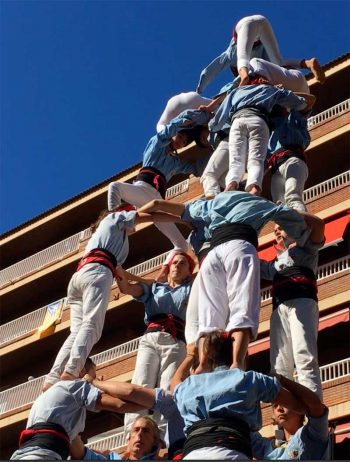
Castellers build human towers of intricate design, topped by little children—called angels—who scamper up five or more levels of adults, raise a hand to the sky, then slither down the other side of the tower. Human tower-building is a 200-year-old Catalan tradition, and one the Catalans are particularly proud of.
Can you even imagine standing on someone’s shoulders? Without holding on? And while fighting to maintain your balance, allowing another adult to climb up your body and stand on your shoulders? And again, and again? Castellers are not professional acrobats. They’re ordinary people of all ages, all sizes, and they’re all members of human tower-building social clubs based on neighborhood.
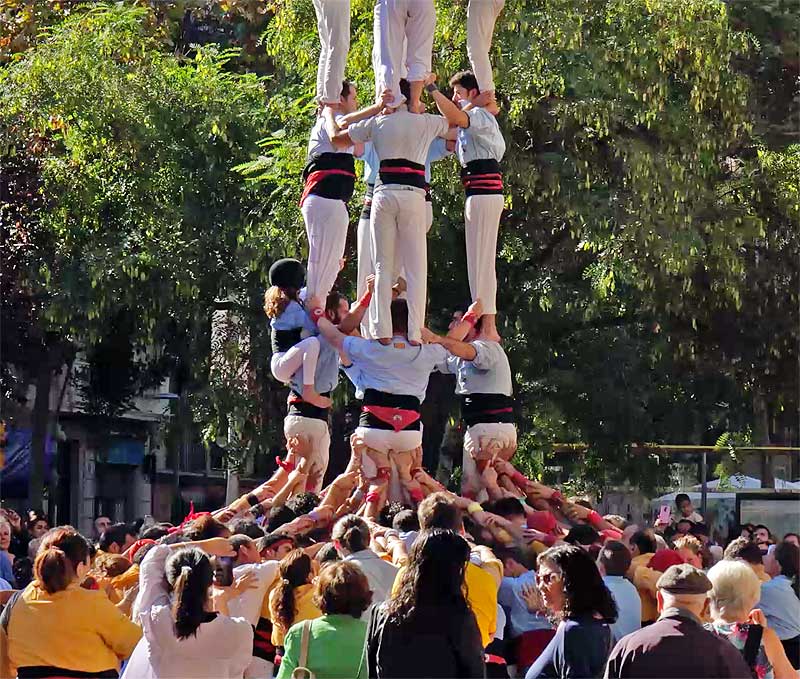
Two or more clubs meet up and take turns building their towers, each carefully designed and rehearsed. Members of one club help strengthen the base of the other club’s tower. Tower-building is a collaboration, not a competition. Human tower-building clubs are built on teamwork, integration, solidarity, and democracy—values the Catalans hold dear.

Our thiefhunting mission in Barcelona coincided with the confusion, protests, demonstrations, and celebrations over Catalonian independence. We were smack in the middle of it, our hotel being opposite the national police building. The tiny, one-lane street our hotel was on was flanked by armed officers 24 hours a day, probably the safest hotel in the city. During demonstrations the street was blocked off and we couldn’t easily get into our hotel.
One day, Bob and I were rushing across town to pick up our translator (for interviewing pickpockets) just as independence was declared. Plaça de Sant Jaume, usually empty, was mobbed with joyous, singing people. We didn’t realize just how mobbed it was, how tight the pack, and how far into the feeder streets it reached. We dove in. I mean, we had to get across! Bob was carrying multiple camera bags and an ungainly camera sprouting a microphone and accessories. I was toting a large tripod. We burrowed and tunneled and pushed our way through the crowd. It took about 40 minutes instead of three. Half way through I realized just how stupid it had been to press forward, and got in a panic about the potential of a stampede. A single firecracker could start it. Headline in my head: “86 trampled to death, 2,000 injured!”
Castellers, the human towers
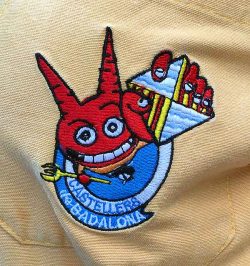
As always, I checked for Casteller events and was thrilled to find one happening during our stay. I’d only been to one long ago, in Plaça de Sant Jaume, which was as crowded as on the recent independence celebration day. I couldn’t get close to the towers. Now, on our second to last day in Barcelona, we trekked across town and arrived in time to see two Castell clubs gathering, members twisting into their black sashes, tying on their bandanas, and finally organizing a strong, jigsaw-like base for the first tower to be built.
I was excited, but the Castellers seemed nonchalant. Probably due to their constant rehearsals. This was to be an exhibition of what they’d designed and practiced. Each club would build three towers of increasing complexity. Watch in my video (below) how the first human tower morphs into a “pillar” as it is dismantled, and how three Castellers per level, way up there, gracefully step down, backwards and blindly, without using their hands. Incredible!
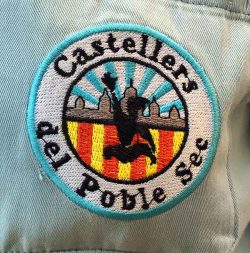
I interviewed a team member, who explained the Casteller’s long Catalonian history, lull, and recent surge in activity. The tradition of Castellers is now considered an Intangible Cultural Heritage of Humanity by UNESCO.
I asked my Barcelona-based friends once, would you let your 6-year-old climb way up there? Sure, they said. All the people forming the base make a soft mattress if the child should fall.
The music, too, is unique, and I can’t get it out of my head. High-pitched wind instruments and drums play specific tunes at different stages of the tower-building, and set the pace for its construction.
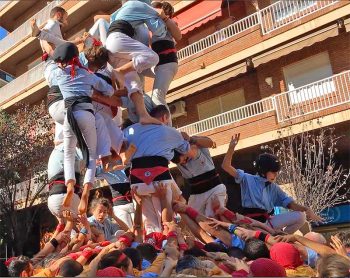
I was right there, at the edge of the base, as the towers rose. So close I couldn’t capture the entire height of them. So close I actually stepped back when one tower appeared to be unstable, its members shaking, intense, trying desperately to keep the structure together.
The informative Castells website explains that only about 3% of attempted towers fall. I didn’t know that as I watched, but I knew that this tower was doomed. The three smallest children managed to slither down; then seven layers, or levels, or flights, or stories of humans came tumbling down. You have to see it in the video posted here. See it on the biggest screen possible. Look at their faces, their concentration, their sweat.
Here’s the video:






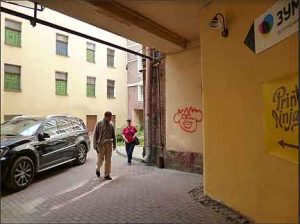
No comment yet, add your voice below!